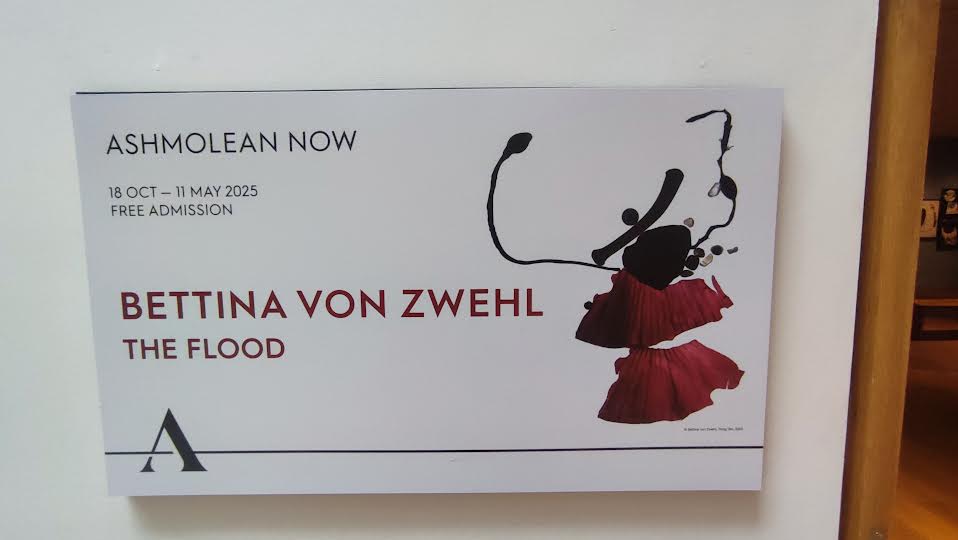Write Cut Rewrite - Bodleian Libraries - Review
★ ★ ☆ ☆ ☆
En route to visit relatives for Christmas, I found myself
back in Oxford with a decent slice of time to kill. What better use of it than
visit some temporary exhibitions. The next three reviews were visited in
relatively quick succession on the 19th of December 2024.
 |
| Image via The Bodleian |
Write Cut Rewrite could be found in Weston Library's
treasury room, across the street from the Radcliffe Camera, all the way towards
the back right of the spacious entrance hall. It was on display between
February 2024 and January 2025 - having been curated by D. van Hulle and M.
Nixon. Their accompanying book sits conspicuously above a bookshelf, visible as
you enter.
The treasury is a rather small, single room exhibition
space, and - this time - it is home to four central square cabinets. The walls
are separated into thematic displays. The final element is the aforementioned
bookshelf, containing published copies of the works under consideration in the
exhibition. I wonder if anyone is spending any time with the available books? I wasn't.
The central theme of the exhibition is simple. Writers edit.
Their edits can give us insight into their creative process. It isn't a
groundbreaking idea - yet the wealth of texts and drafts available to the
Bodleian make this exhibition worthwhile. In their own words, we get to
see "an intimate glimpse over the solder of your favourite
author".
As to who our favourite author is? The works included paint
quite the traditional picture, albeit widened to include more modern works less
traditionally considered Classics. A banner above the wall lists out names of
authors included in the exhibition. Interestingly, both Mary and Percy Shelley
are grouped together. This is later justified as both are used to explore
collaboration in each other's works.
The themes of the displays are rather simple: doodles in the
margins, ripped out pages, physical acts of cutting and pasting, multiple
drafts of crucial first lines. Yet, while the purpose of these displays is a
tad basic, the objects included in them become far more fascinating than the
reason for their inclusion.
I clocked off engaging with the exhibition as it was
presented to me, and instead found myself marvelling - well, nerding out really
- over the texts and manuscripts. As Baudrillard suggests, my fascination with
the objects was because you could confirm their authenticity in the makers
marks that they bore. Every scratched-out line, every torn-out page, this was
physical evidence of actions taken by some of my 'favourite authors'. In this
sense, the exhibition wildly succeeds. I did, genuinely, feel as if I was given
a privileged view into the actions and mindsets of the displayed writers, as
seen through their process of edits and re-edits.
To take an example, we see an early manuscript for Kafka's
Das Schloss (The Castle) in which every instance of 'ich' is crossed out and
replaced with K. A major shift in perspective demonstrated through his actual
penmanship. Penmanship that was borderline illegible, I have to comment. He
did not have the best handwriting...
Another fun object is a list of similes created by Raymond
Chandler. He would cross out ones he had used, noting which book they had
appeared in, as to not re-use descriptive text. That's the thing, though.
Irrespective of the theme of the case or cabinet, I was purely using this
exhibition to look at interesting things. I mean, they had the first draft of
P. Shelley's Ozymandias. How can you not find that at least a bit fun.
 |
| P. Shelley's Ozymandias, image via The Bodleian |
Oddly, one of the most prevalent texts was la Carre's Tinker
Tailor Soldier Spy. No complaints here, I have an unhealthy obsession with
Vinterberg's film adaptation. Drafts were used to explore re-writing first
lines of re-describing characters. However, in a particularly poor move, one
text panel actively names who 'the mole' is, thus spoiling the entire book.
This isn't the only instance of odd curatorial practices. Later on an object
label contains exactly the same text as a much larger interpretive text banner,
directly above it. A direct copy and paste. Perhaps here there is a clever
comment to be made about the evidence of editing and production not only in the
exhibition themes, but in the exhibitory text, but, ultimately, this is just
lazy.
Overall, I enjoyed the objects, but wasn't fully convinced by the
exhibition in the form it was presented. It felt as if the curators had found
some genuinely fascinating and fun objects within the Bodleian's collections
and then built the exhibition around them as an excuse to exhibit
them. Granted, some interesting aspects of editing were brought to light: self-censorship, paratextual influence of editors, the potency of titles. Perhaps the companion text goes into more detail, detail I
felt lacking in the gallery. Ultimately, Write Cut Rewrite is a collection
of very fun manuscripts and objects, grouped together by a rather surface level theme.
★ ★ ☆ ☆ ☆



Comments
Post a Comment